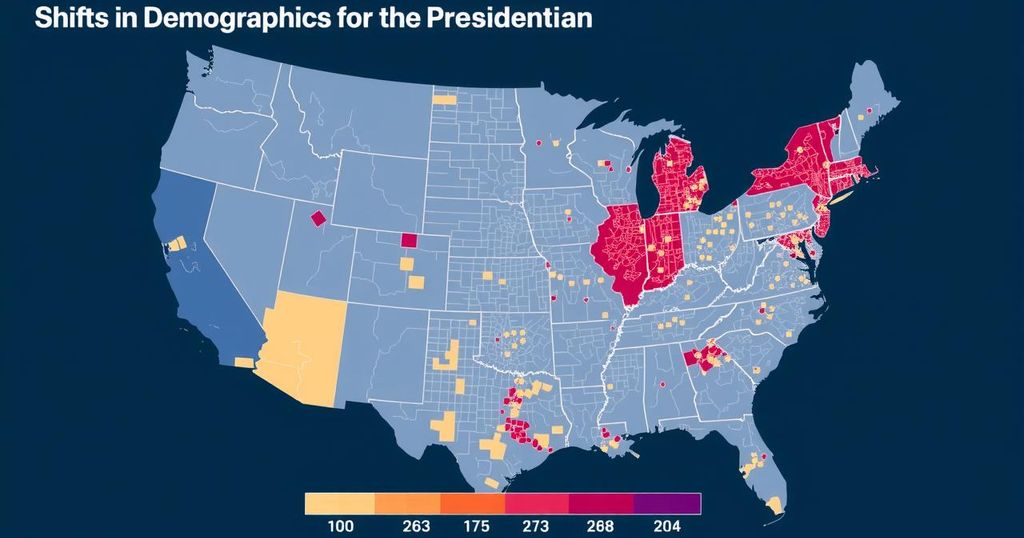Analyzing County Shifts in the 2024 Presidential Election

The 2024 presidential election reveals crucial shifts in voting patterns across U.S. counties as Vice President Kamala Harris and former President Donald Trump vie for election. The Washington Post provides a real-time tracking of these shifts, emphasizing key battleground states and the interplay between urban, suburban, and rural dynamics, which could decisively influence the election outcome.
As the 2024 presidential election unfolds, the shifts in voting patterns across America’s diverse counties are becoming increasingly significant. The outcome, closely contested between Vice President Kamala Harris and former President Donald Trump, may hinge on nuanced changes amongst the approximately 3,000 counties nationwide. The Washington Post provides a real-time analysis of these shifts against the 2020 election results, particularly focusing on urban, suburban, and rural trends that have emerged from prior elections. Notably, each group’s dynamics could play a decisive role in battleground states where both candidates aim to consolidate their support. Specifically, urban core areas, major suburbs, and small cities exhibit varied voting behaviors. Trump gained substantial support in rural regions during the 2016 election cycle, counterbalanced by Biden’s significant inroads with suburban voters in 2020. The strategies for Harris and Trump involve capitalizing on these past electoral outcomes, especially within critical states such as Georgia, North Carolina, Pennsylvania, Michigan, Arizona, Wisconsin, and Nevada, each playing host to crucial electoral votes. In Georgia, highlighting the shifts in counties around Atlanta will be vital due to Joe Biden’s narrow victory flipping the state blue. Likewise, in North Carolina, increasing support from highly educated urban centers may offset Trump’s strengths in rural areas. Pennsylvania remains crucial, benefitting from both urban victories and a need to avoid further erosion of support in crucial counties. Additionally, shifts in Michigan emphasize the importance of medium-sized cities alongside major metropolitan areas like Detroit, while Arizona’s substantial Maricopa County is a focal point for understanding changes in voters’ preferences. Finally, in Wisconsin, rural areas again prove to be of paramount importance due to narrow margins from past elections, illustrating that subtle fluctuations in vote distribution may substantially impact the overall results of the election.
The background of this analysis centers on the intricate dynamics of voter behavior within various county classifications leading up to the 2024 presidential election. Past elections have revealed significant trends in urban, suburban, and rural voting patterns, influencing outcomes in pivotal swing states. The real-time tracking by The Washington Post captures these shifts, providing immediate insights into how diverse counties are responding to the candidates’ campaign strategies. Understanding these trends is critical, as both major parties aim to consolidate their electoral bases in the face of changing demographic patterns and voter priorities.
The examination of county shifts in the 2024 presidential election illustrates the potential impact of nuanced voting behaviors on the election outcome. As Kamala Harris and Donald Trump position themselves in key battleground states, the importance of urban, suburban, and rural dynamics becomes evident. Observing the real-time changes and mapping these trends will be crucial in predicting electoral successes in an incredibly competitive political landscape.
Original Source: www.washingtonpost.com






